Shankar IAS Summary: Conservation Efforts- 2 - BPSC (Bihar) PDF Download
Project Lion
- Asiatic lion population in Gir Forest increased from 523 (2015) to 674 (2020).
- Discussions on lion relocation started in 1995, with Kuno Wildlife Sanctuary as an alternative site
- The Gir population faces low genetic diversity, making it vulnerable to extinction from epidemics
- Supreme Court issued an order in 2013 to relocate lions to the Kuno-Palpur Wildlife Sanctuary
- CSIR-Centre for Cellular and Molecular Biology sequenced the Asiatic lion genome, revealing low genetic diversity.
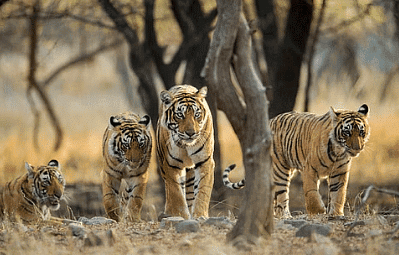 Madhav National Park
Madhav National Park - Project Lion identifies six new potential relocation sites, including Madhav National Park, Sitamala Wildlife Sanctuary, Mukundra Hills Tiger Reserve, Gandhi Sagar Wildlife Sanctuary, Kumbhalgarh Wildlife Sanctuary, and Jessore-Balaram Ambaji WLS
- Central Government launched the "Asiatic Lion Conservation Project" for 2018-21, aiming to protect the last free-ranging Asiatic lion population.
- Project funded through Centrally Sponsored Scheme-Development of Wildlife Habitat (CSS-DWH) with a 60:40 ratio of Central and State contributions
- The asiatic lion, listed as critically endangered, receives the highest degree of protection under the Wildlife (Protection) Act, 1972.
- The project adopts a "Species Conservation over a large landscape" approach, dividing the Greater Gir Region into zones with "Zone Plans and Theme Plans" for conservation efforts.
Secure Himalaya
The collaborative initiative between the Ministry of Environment, Forest and Climate Change (MoEF&CC) and the United Nations Development Programme (UNDP) has been launched to craft a comprehensive strategy for the conservation of snow leopards. The central objective is to safeguard the natural habitats of these magnificent creatures, enhance the ecological integrity of the Himalayan ranges, and positively impact the lives of communities dwelling in Himachal Pradesh, Jammu and Kashmir, Uttarakhand, and Sikkim.
Key Components of the Project Include
Strengthening and Improving the Protected Area Network: Working towards the enhancement and fortification of the existing network of protected areas.
 Himalayas
Himalayas- Landscape-level Conservation Approach for Wildlife: Embracing a holistic approach to wildlife conservation at the broader landscape level.
Control of Poaching and Illegal Wildlife Trade: Implementing robust measures to combat poaching activities and the illicit trade of wildlife.
Mitigation of Human-Wildlife Conflicts: Developing strategies to effectively address and minimize conflicts between human populations and wildlife.
Management of Tourism in Wildlife Areas: Implementing responsible tourism management practices in wildlife areas to ensure sustainable coexistence.
This collaborative endeavor underscores a commitment to the comprehensive preservation of snow leopards, not only focusing on protecting their habitats but also striving to improve the overall ecological balance in the Himalayan region. The engagement of local communities is a key aspect, emphasizing a sustainable and mutually beneficial cohabitation between wildlife and the people of the region.
Project Cheetah
Project Cheetah stands out as the world's pioneering large carnivore translocation initiative, a vital component of India's conservation endeavor known as 'Project Tiger.' The cheetah declared extinct in India in 1952, marked a significant loss as the sole large wild mammal species to go extinct since the country gained independence in 1947. This extinction was a result of various factors, including widespread animal capture for activities such as coursing, bounties, and sport hunting, along with extensive habitat conversion and a substantial decline in the prey population of cheetahs.

Objectives of Project Cheetah
The action plan aims to establish a viable cheetah metapopulation in India, enabling these magnificent creatures to fulfill their functional role as apex predators. Simultaneously, it provides space for the cheetahs to expand within their historical range, contributing to global conservation efforts. The plan includes the introduction of at least 50 cheetahs into various national parks over the next five years.
Cheetah Reintroduction Plan
Under the umbrella of Project Cheetah, Kuno National Park in Madhya Pradesh recently welcomed eight African Cheetahs. These cheetahs, originating from Namibia, comprise five females and three males. Other sites recommended for holding and conservation breeding of cheetahs in controlled wild conditions include Nauradehi Wildlife Sanctuary (Madhya Pradesh), Gandhi Sagar Wildlife Sanctuary - Bhainsrorgarh Wildlife Sanctuary complex (Madhya Pradesh), Shahgarh bulge in Jaisalmer (Rajasthan), and Mukundara Tiger Reserve (Rajasthan).
Significance of Cheetah Relocation
The relocation of cheetahs holds immense potential to:
- Create a Sustainable Cheetah Population in India: Establishing a thriving cheetah population that can interconnect and persist over time.
 Gandhi Sagar Wildlife Sanctuary
Gandhi Sagar Wildlife Sanctuary - Mobilize Resources: Galvanizing funding and resources, fostering efforts for wildlife conservation and generating employment opportunities.
- Global Conservation Contribution: India's participation in worldwide conservation, aiding the preservation of this endangered species.
- Boost Local Livelihoods: Improvement of income and livelihoods for local communities through wildlife tourism and conservation initiatives, garnering their support for conservation efforts.
- Contribute to Climate Goals: A balanced ecosystem with cheetahs as apex predators can help mitigate the impacts of climate change.
In essence, the relocation of cheetahs aligns with multifaceted objectives, encompassing wildlife conservation, community development, and climate change mitigation.
Captive Breeding
- Captive breeding involves capturing, breeding, and raising wild species in specialized facilities.
- It serves as a last resort to preserve species in the wild under specific circumstances.
- The importance of captive breeding includes:
- Boosting numbers when populations decline dangerously.
- Releasing captive-produced young where wild populations have diminished or disappeared.
- Providing a temporary solution when existing habitat is of poor quality or faces environmental issues.
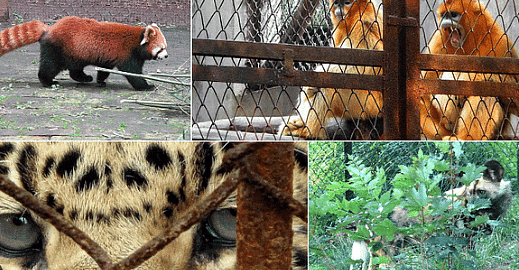 Captive Breeding Species
Captive Breeding Species - Offering hope for survival in fragmented habitats through genetic mixing.
- Assisting birds trapped in degraded habitats to expand their range.
- Providing scientific insights that may be challenging to obtain in the wild, contributing crucial information for species preservation.
- Meeting demands for reintroduction or reestablishment in natural habitats.
- Example: Captive breeding of lion-tailed macaques in Arignar Anna Zoological Park, Chennai, and Mysore Zoo as a proactive conservation measure.
Project Dolphin
Dolphins, thriving in aquatic ecosystems, are present in diverse environments such as the sea, brackish water, and freshwater.
In Indian waters, 15 species of marine and harbor dolphins are reported, with Irrawaddy Dolphins found in the brackish waters of Odisha.
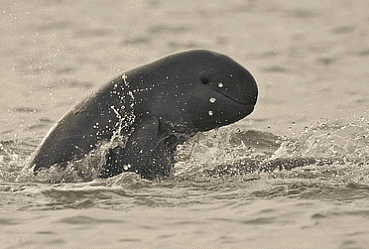 Irrawaddy Dolphins
Irrawaddy Dolphins- Among freshwater dolphins, the Gangetic Dolphin inhabits the Ganges River and its tributaries, while Indus River Dolphins have been documented in the Indus River in Punjab.
All freshwater, brackish water, and marine dolphins (Cetaceans) enjoy Schedule-1 listing under the Wildlife (Protection) Act, 1972, providing them with the highest protection against hunting.
The Gangetic Dolphin is specifically recognized as one of the 17 species for the 'Recovery Programme of Critically Endangered Species' under the Centrally Sponsored Scheme of 'Integrated Development of Wildlife Habitat.'
Ganges Dolphin
- Ministry of Environment and Forests designates the Ganges River Dolphin as a National Aquatic Animal.
- Assam government also recognizes it as the state aquatic animal.
- Survives exclusively in freshwater and is essentially blind.
- Hunts use ultrasonic sounds, bouncing off prey and enabling mental "seeing."
- Assessment reports estimate around 3,700 Ganges River Dolphins in Indian rivers.
- Uttar Pradesh records the highest population.
- Sighted in deep rivers of Assam, Bihar, Jharkhand, Madhya Pradesh, Rajasthan, Uttar Pradesh, and West Bengal.
- MoEF & CC's Conservation Action Plan (2010-2020) identifies threats like river traffic, irrigation canals, and prey-base depletion on dolphin populations.
- Inhabits Ganges-Brahmaputra-Meghna and Karnaphuli-Sangu river systems in Nepal, India, and Bangladesh.
- The total estimated global population is around 2,000.
 Ganges Dolphin
Ganges Dolphin - Listed in Schedule I of the Wildlife Protection Act (1972).
- One of the four "obligate" freshwater dolphins globally, alongside the 'baiji' in the Yangtze River (China), 'bhulan' in the Indus (Pakistan), and 'boto' in the Amazon River (Latin America).
- These four species exclusively inhabit rivers and lakes.
- Chinese River Dolphin was declared functionally extinct in 2006 by international scientists.
- Ganges River Dolphin in India faces threats from river water pollution, siltation, accidental entanglement in fishing nets, and poaching for oil.
- Alterations to rivers via barrages and dams contribute to population separation.
- Organizations like WWF-India in Uttar Pradesh initiate programs for conservation and re-introduction of the River Dolphin.
Conservation efforts-Project Dolphin
- The Ministry of Environment, Forest and Climate Change (MOEF&CC) plans to initiate a 10-year project for conserving and protecting river and sea dolphin species.
- The project aims to bolster conservation, strengthen biodiversity, create employment opportunities, and attract tourism.
- It envisions addressing conservation concerns, empowering stakeholders, and reducing river pollution for sustainable fishery and livelihood options through scientific conservation methods.
- The project focuses on the conservation of dolphins and the overall aquatic habitat, utilizing modern technology for enumeration and anti-poaching activities.
 Fisherman
Fisherman - It engages fishermen and other river and ocean-dependent populations, striving to improve the livelihoods of local communities.
- The National Dolphin Research Centre (NDRC) is being established at Patna University for the conservation of the endangered Gangetic river dolphin.
- The establishment of the Vikramshila Ganges Dolphin Sanctuary in Bihar supports efforts towards dolphin conservation.
Government Measures taken to prevent the menace of Wild Animal’s Entry to Human Habitats
- Financial assistance is provided to State Governments under Centrally Sponsored Schemes like 'Integrated Development of Wildlife Habitats,' 'Project Tiger,' and 'Project Elephant.'
- Aim: Enhance forest and wildlife areas, including national parks and sanctuaries, to improve food and water availability and reduce animal migration to human habitats.
- Measures like constructing barriers, such as boundary walls and solar-powered electric fences, are permitted under Central assistance to prevent wild animal attacks.
- Infrastructure development and support facilities for the immobilization and relocation of identified problematic animals, including tranquilization and relocation to natural habitats or rehabilitation in rescue centers.
- Chief Wildlife Wardens are empowered to permit the hunting of problematic animals under the provisions of the Wildlife (Protection) Act, 1972.
 Hunting
Hunting - Sensitization programs were launched to create awareness about appropriate actions during encounters and attacks by wild animals.
- Eco-development activities initiated in villages around Protected Areas to engage communities in cooperative management, addressing grievances related to human-wildlife conflicts genuinely.
India Adopts Sawen
- India formally adopts the Statute of the South Asia Wildlife Enforcement Network (SAWEN).
- Aims to strengthen ties with member countries for controlling transboundary wildlife crime.
- It focuses on communication, coordination, collaboration, capacity building, and cooperation within the region.
- SAWEN includes eight South Asian countries: Afghanistan, Bangladesh, Bhutan, India, Maldives, Nepal, Pakistan, and Sri Lanka.
- It functions as a regional intergovernmental body combating wildlife crime.
- Seeks common goals and approaches to address challenges posed by illegal trade in the region.
National Wildlife Action Plan
- The inaugural National Wildlife Action Plan (NWAP) was adopted in 1983 following the decision made during the XV meeting of the Indian Board for Wildlife in 1982. This plan delineated strategies and action points for wildlife conservation, which remain relevant.
- Over time, certain challenges have intensified, and new concerns have emerged, necessitating a shift in priorities. Increased commercial use of natural resources, ongoing growth in human and livestock populations, and changes in consumption patterns are leading to greater demographic impacts.
- The NWAP underwent revisions, with the third National Wildlife Action Plan for 2017-2031 being particularly noteworthy for acknowledging climate change's impact on wildlife. It emphasizes the inclusion of activities for mitigation and adaptation into wildlife management planning.

Components of the National Wildlife Action Plan for 2017-2031
- Enhancing and advancing integrated management of wildlife and their habitats.
- Addressing climate change and advocating for sustainable management of aquatic biodiversity in India.
- Promoting ecotourism, nature education, and participatory management.
- Reinforcing wildlife research and human resource development in wildlife conservation.
- Providing necessary policies and resources for wildlife conservation in India, facilitating integration into development planning processes.
Strategy for Action
- The strategy is based on the critical role of ecosystem-governed or tightly controlled natural processes in food production, health, and human survival.
- It underscores the intrinsic value of nature and its components, emphasizing the preservation of ecosystems, known as the 'Life Support System.'
- The plan highlights the preservation of genetic variation and sustainable use of species and ecosystems, both influencing scientific progress and supporting rural populations.
- A landscape approach to conservation is adopted for all species, prioritizing the recovery of vulnerable wildlife species and protecting their diverse habitats.
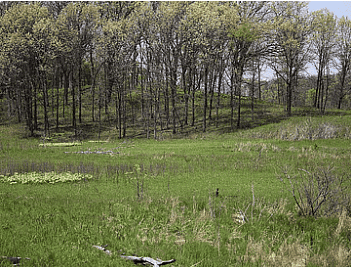 Grassland
Grassland - Despite being one of the world's 17 mega biodiversity countries, the plan notes a lack of serious consideration of adverse ecological consequences from population, commercialization, and development pressures on wilderness areas.
- The plan emphasizes the deteriorating state of natural heritage, including rivers, forests, grasslands, mountains, wetlands, coastal and marine ecosystems, dry areas, and deserts.
- Public support for wildlife conservation is deemed crucial, with recommendations to strengthen the 'core-buffer-multi-use surround' structure and increase investments in eco-development, education, innovation, training, conservation awareness, and outreach programs.
- The strategy prioritizes wildlife health and catastrophe management, reorients tourism management in wildlife regions, and calls for fair treatment of communities under the Forest Rights Act, acknowledging their reliance on natural biomass supplies.
DNA Barcoding
- A Memorandum of Understanding (MoU) has been signed between the Zoological Survey of India (ZSI), a subordinate organization under the Ministry of Environment, Forest and Climate Change (MoEF&CC), and the International Barcode of Life (iBOL), a Canadian not-for-profit corporation.
- ZSI and iBOL collaborate on DNA barcoding, a methodology that involves rapidly and accurately identifying species by sequencing a short segment of standardized gene regions and comparing individual sequences to a reference database.
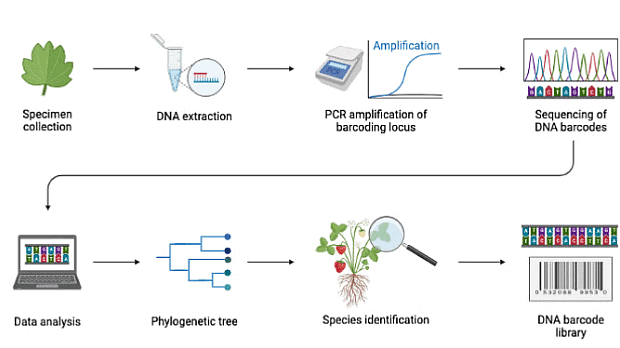 DNA Barcoding
DNA Barcoding - iBOL, a research alliance, comprises nations committed to human and financial resources for expanding the global reference database, developing informatics platforms, and creating analytical protocols for biodiversity assessment and description.
- The MoU enables ZSI to participate in global programs like Bioscan and the Planetary Biodiversity Mission.
Programs of iBOL
Barcode 500K (Completed in 2015)
- Established sequencing facilities, analytical protocols, informatics platforms, and international collaboration.
- Laid the foundation for building DNA barcode reference libraries.
Bioscan (Launched in June 2019)
- Aims to deliver DNA barcode coverage for 2 million species by 2026.
- Activates biomonitoring for ecoregions in participating nations, codifying species interactions.
- Develops informatics support for high-throughput sequencing.
- Promotes applications of DNA barcoding.
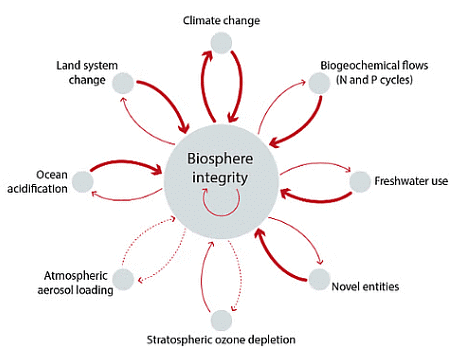 Planetary Biodiversity
Planetary Biodiversity
- Planetary Biodiversity Mission (To be launched in 2026 and completed by 2045)
- Goals include completing the census of all multicellular species.
- Establishing a global biosurveillance program.
- Constructing a 'library of life' by preserving DNA extracts from all species.
Conservation Classification of Species
Flagship Species
- Chosen to represent environmental causes, typically ecosystems in need of conservation.
- Selected for their attractiveness or distinctiveness to generate public support.
- The concept aims to leverage support for the conservation of entire ecosystems.
Example Flagship Species: Indian tiger, African elephant, giant panda of China, mountain gorilla of Central Africa, orangutan of Southeast Asia, leatherback sea turtle.
Charismatic Megafauna
- Large animal species with widespread popular appeal.
- Environmental activists strategically use them to achieve conservation goals beyond the specific species.
- Examples include the Giant Panda, Bengal Tiger, and the Blue Whale.
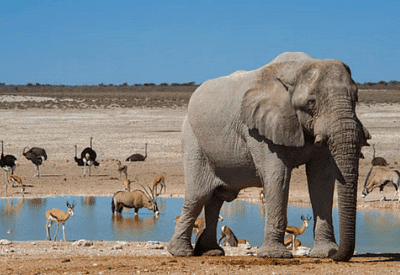 Charismatic Megafauna
Charismatic Megafauna
Umbrella Species
- Wide-ranging species whose requirements include those of many other species.
- Protecting umbrella species automatically extends protection to other species.
- Chosen for conservation decisions as safeguarding them indirectly protects the diverse species in their habitat.















